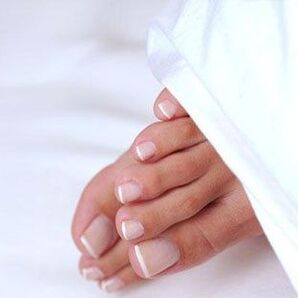
Summer offers us wonderful opportunities for relaxation and beauty. After all, when, if not in the summer, can you afford a fashion show in beautiful open shoes, showing others your flawless pedicure and beautiful legs? And what a pleasure to walk barefoot on the warm, soft sand!
Unfortunately, all these summer charms can end rather sadly for our feet and nails, because when opening them, we risk catching such an unpleasant and extremely insidious disease as a fungus. And most often it is our nails and our feet that are affected. Moreover, you can get infected with nail fungus not only on the beach or in a public shower.
You can catch this disease even in public transport, or simply by walking in the street with open shoes: slippers or sandals.
Unfortunately, the consequences of a fungal infection for the nails, and even for the whole human body, are quite serious, so you should not start this disease.
Therefore, it is important to know the symptoms of the infection and to start treatment in a timely manner. And for this you need to understand what constitutes a toenail fungus.
What is onychomycosis
Fungi, as a class, belong to the lower plants which form filaments of mycelium and spores. It is with the help of spores that fungi reproduce and also spread in the external environment. You will be surprised, but scientists know more than 300, 000 varieties of fungi, and about 100 species of them can cause skin and nail diseases in humans.
Since they also reproduce through spores, a tiny crumb from a diseased fingernail or a tiny piece of skin from the heel or foot of a sick person is enough to infect these fungi.
Fungal nail infections (onychomycosis) can be caused by various types of fungi. Accordingly, the signs of infection will be different, as well as the ways to get rid of it.
Dermatophytes
If you notice that small yellow spots or stripes appear on your nails, stripes of a lighter white or gray shade appear on your nails, and the edge of the nail recedes and turns yellow - most likely you have beeninfected with dermatophytes.
The degree of dermatophyte infection can be easily determined by the same scratches and spots: the brighter they are and the closer they are to the center of the nail, the stronger the infection. So, if these scratches and spots are located closer to the edges of the nails, the infection has not progressed too much, and the disease can be stopped in time. But don't delay! After all, if left untreated, not only the toenails are affected, but also the skin around them, and the nail plate will eventually turn completely yellow and opaque.
yeast mushrooms
If the nails become uneven, grooves and "waves" appear on them, if at the same time the nail gradually turns yellow and loses its density, becomes very brittle, thin, begins to drag behind the nail bed - most likely, you have become infected with yeast. In this case, the degree of infection is determined by the color of the nail: the more yellow or even brownish it became, the more the lesion advanced.
The defeat of toenails with yeast most often begins with a slight thickening of the folds of the nails, which eventually swell and turn red. Pressing on those inflamed rollers is quite painful. Later, pus may appear there, which, if it comes into contact with the skin, can cause further infection. If no action is taken, over time the nail can gradually bend and change color, shallow brown grooves will appear on it.
Molds
If a person's fingernails, like his whole body, were weakened for a long time by a long illness, and then quickly changed color - they turned yellow, blue, green, brown or black, or dark dots or spots oreven black ones appeared on the nails - most likely there was a mold infection.
Such an infection, fortunately, does not penetrate very deeply into the structure of the nail plate itself and, in comparison with the above types of fungus, is treated quite quickly: from one to two months.
Consequences of the disease
However, all these are only outward signs of the disease, and if no measures are taken, nail fungus can spread throughout the body, especially when it comes to dermatophytes or molds. Over the course of a year, and sometimes for several years, the fungus slowly destroys the nail plate, fills the entire nail and penetrates the nail bed, and after a while it spreads from the feetto the hands, while first affecting the thumbs, and then all the others.
Spreading and taking root in the human body, the fungus significantly weakens the immune system, contributing to the appearance of various allergic reactions and the exacerbation of chronic diseases.
If a person does not start treatment at this stage, the internal organs are damaged. People who have the bad habit of biting their nails are especially susceptible to such an infection.
Therefore, it is extremely important to recognize the disease in a timely manner and start timely and adequate treatment. Naturally, only a specialist can prescribe it, who will conduct the necessary examination and prescribe the appropriate drugs that affect exactly the fungus that affects your body.
Self-diagnosis
You can try to diagnose your own nail fungus yourself if you think there is something wrong with their appearance, if you experience itching and dry skin.
To do this, you will need the most common potassium permanganate. You need to make an aqueous solution out of it and lower your legs into it. After a few minutes, your nails will turn brown, but the fungal lesions will remain mild.
In this case, you certainly cannot do without consulting a doctor. And better not delay!
















